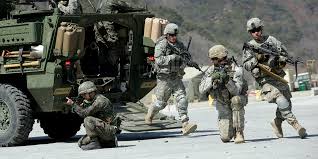We had just created our new flag. And we had a prime minister that was young, cool, stylish and brilliant. We were a young country, we were told, and the future would belong to us. We were not stodgy old England, or corrupt France, or violent America. We were the new kids and we were going to create great modern things. As Pierre Berton later called it, it was "The Last Good Year."
The mythology, as John Ralston Saul describes it, was in full force. We still had all the stereotypes and institutions that our ancestors created. We venerated these stereotypes and believed that they were unquestionably true.
The Mounties always got their man.
Maple syrup ran like liquid gold from tall and stately maple forests.
The winter brooded, dark and deep for half the year or more, toughening us and defining our solid if unspectacular nature.
These were simple concepts, and we could all believe in them because they were pleasant, easy, charming and precious to us.
We gave the world two of the toughest sports in the world, hockey and lacrosse. We knew, of course, that lacrosse was a gift of the Indigenous people, but they were "our" indigenous people, so that counted as "Canadian."
Those games were not wide-spread in the world, which made them more characteristic of us. Unknown, subtly violent, "manly" and carved from the forest and frozen ponds, anyone in foreign countries who knew of them knew that they were "Canadian" and best left to the semi-wild inhabitants of that northern land.
And there was the land itself, the biggest myth of all, one we could sink our teeth into. Western mountains, vast oceans of prairie grassland, the never ending forest, our own version of "old Europe" in North America, and the charm of Atlantic villages perched defiantly on the ocean's craggy shore. It was immense, unknowable, unfathomable. It staggered the imagination of those from the "old world" and exhausted their imaginations. And it was ours, all of it … owned by we few, we happy few, who had dominion over all the land and all it contained. It was the crowning glory to our lovely little myth.
 We have all grown up since those halcyon days. The world has become old, cynical, and harsh. Myths die hard, but die they must. And new realities come forward with startling clarity. We now see our Parliament buildings, once the architectural symbol of our connection to glorious histories, as the home of partisan politicians and avaricious lobbyists who seek to line pockets instead of building a nation. We see our police in a new light, flawed and sometimes all too human, mostly good but occasionally horribly bad or ineffective. We see our huge and gorgeous land now scarred and dirty, old before its time and robbed of its youth and vigor. We see our countrymen and women now as strangers and aliens, with startlingly different ideas and goals. We have been rocked by scandal, horrendous crime, violence, inept leaders, and racism and bigotry that we never knew existed in our previously peaceable and lily-white kingdom. We have been shaken to the core by a pandemic that has tested our resolve and willingness to be kind to one another. And we have been found wanting.
We have all grown up since those halcyon days. The world has become old, cynical, and harsh. Myths die hard, but die they must. And new realities come forward with startling clarity. We now see our Parliament buildings, once the architectural symbol of our connection to glorious histories, as the home of partisan politicians and avaricious lobbyists who seek to line pockets instead of building a nation. We see our police in a new light, flawed and sometimes all too human, mostly good but occasionally horribly bad or ineffective. We see our huge and gorgeous land now scarred and dirty, old before its time and robbed of its youth and vigor. We see our countrymen and women now as strangers and aliens, with startlingly different ideas and goals. We have been rocked by scandal, horrendous crime, violence, inept leaders, and racism and bigotry that we never knew existed in our previously peaceable and lily-white kingdom. We have been shaken to the core by a pandemic that has tested our resolve and willingness to be kind to one another. And we have been found wanting.
Still, we try. We know now that we have committed many grievous errors towards the Indigenous people who first arrived in this land. We have so far to go to make things right, but we have started. We still have natural wonders to delight the soul. But we also know that we have to become better stewards of the land, and the air above us, and the water we need for life. We still create filth, but we now feel guilty of it and try to reduce our impact. We know that Canada has different faces among us and different beliefs and ways of life, and we are becoming more accepting of this truth, although some still resist and show intolerance. And we know that the future will not necessarily be bright and cheerful and happy, but it could be better despite the challenges if we begin to make sensible decisions. We have a long way to go. And the best thing we have is our people: all of us.
We are a great country, warts and all !






















